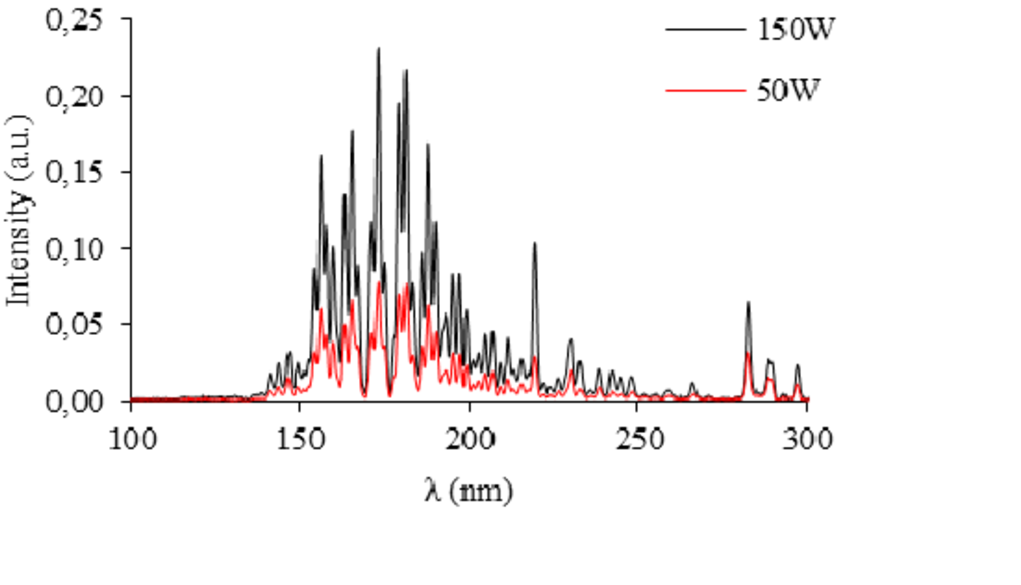Page 1 of 3
QSO J014709+463037
Posted: Sat Sep 23, 2017 1:00 am
by Robin Leadbeater
Just for fun, the recently discovered quadruple gravitationally lensed quasar J014709+463037 with the C11/ALPY200 spectrograph.
My spectrum with an overlay of the confirming spectrum from the Keck telescope published here
https://arxiv.org/abs/1707.05873
The broad UV emission lines from Lyman alpha, Si IV and C IV have been shifted at z =2.4 into the visible.
Robin
Re: QSO J014709+463037
Posted: Sat Sep 23, 2017 10:48 pm
by Robin Leadbeater
My spectrum also shows a broad emission line at 6390A which is not covered by the Keck spectrum. At z=2.377, this works out as 1892A rest wavelength. Does anyone know what that might be ?
Robin
Re: QSO J014709+463037
Posted: Sun Sep 24, 2017 8:59 am
by Andrew Smith
Hi Robin, how about oxygen? I found this
https://www.researchgate.net/figure/287 ... -to-300-nm
Cr 2 has a line there but it does not seem a good candidate from an astrophysical perspective.

- Oxygen plasma UV spectrum
- Oxygen UV spectrum.png (104.63 KiB) Viewed 11117 times
Nice work getting the spectrum.
Regards Andrew
Re: QSO J014709+463037
Posted: Sun Sep 24, 2017 12:14 pm
by Robin Leadbeater
Hi Andrew,
Having dug a little more and finding this "mean" QSO spectrum in the rest frame I am tending towards C III] at 1909A which would give z=2.35
https://ned.ipac.caltech.edu/level5/Glo ... uasar.html
Re: QSO J014709+463037
Posted: Sun Sep 24, 2017 1:32 pm
by Andrew Smith
Hi Robin, given the strong C IV peak then C III looks a strong candidate.
I assume the pros use a model to help them assign lines. With so many "metals" identified the number of possible lines is vast.
Good catch again.
Regards Andrew
Re: QSO J014709+463037
Posted: Sun Sep 24, 2017 5:38 pm
by Robin Leadbeater
Hi Andrew
Yes the paper with the Keck spectrum is an interesting read. They used a quasar spectrum template to fit the main spectrum and determine the redshift. They then set about identifying groups of narrow metal absorption lines (not really visible in my low resolution spectrum) from the various intervening galaxies the light passed through at different redshifts, identifying 8 of them. From that they identified the 3 candidate lensing galaxies and built a model of the lensing system.From that they identified the likely lensing galaxy
Robin
Re: QSO J014709+463037
Posted: Mon Sep 25, 2017 10:40 am
by Andrew Smith
Thanks for the prompt Robin, I have read the paper and it seems to be a real detective story.
I am not totally convinced about how you can confidently assign a given line to say C IV and then use it to estimate a given Z. You could have picked almost any other line and calculated a different Z? I guess it comes down to finding a consistent pattern in Z values for astro-physically relevant lines. Given who they are and it is peer reviewed I will bow to their better understanding.
Regards Andrew
Re: QSO J014709+463037
Posted: Mon Sep 25, 2017 1:29 pm
by etienne bertrand
Hello Robin,
Excellent spectre.
You think the magnitude of this qso is 15/16 ? More?
I think I try to make this when I will can.
Re: QSO J014709+463037
Posted: Tue Sep 26, 2017 9:39 am
by Robin Leadbeater
Hello Etienne,
I think it will be an easy target for you

According to the discovery paper,
https://arxiv.org/abs/1705.08359
the 4 component are g mag 15.6, 15.7, 16.4, 18.1 but the three brightest are only 3 arcsec apart and approximately in an EW line so by orientating the spectrograph slit you could catch these three in the slit at the same time. (I did not bother to do this. My slit runs NS so I just aligned on the middle of the three)
This exposure was 8x600s but the main spectrum features were obvious in just a single exposure
This is my guider image. I guided on the very close mag 12 star TYC 3279-1686-1
Good luck!
Robin
Re: QSO J014709+463037
Posted: Sat Sep 30, 2017 5:10 pm
by etienne bertrand
Hello Robin,
Easy i dont know, but when i will arrive in my house i try this famous object.
Il s very interesting with the attic paper.
Good Robin. Thanks for images.